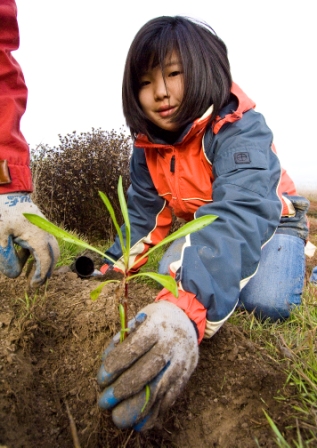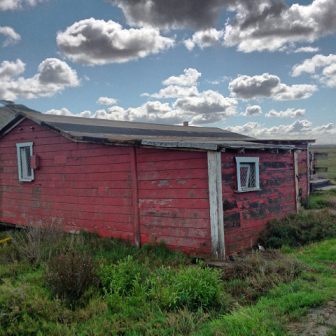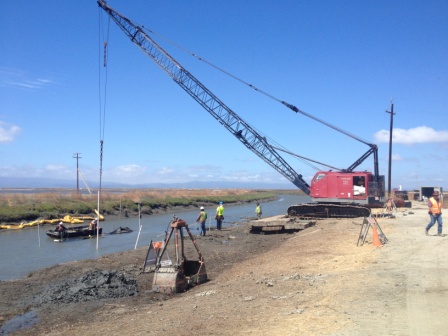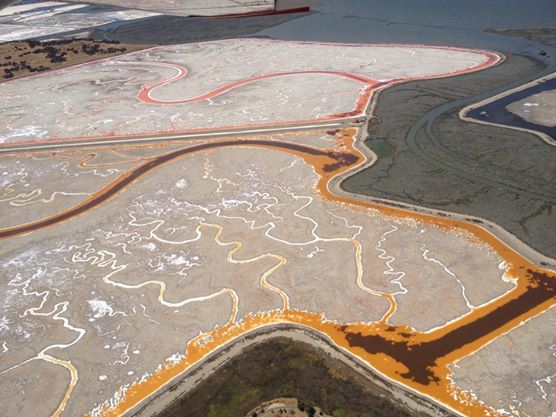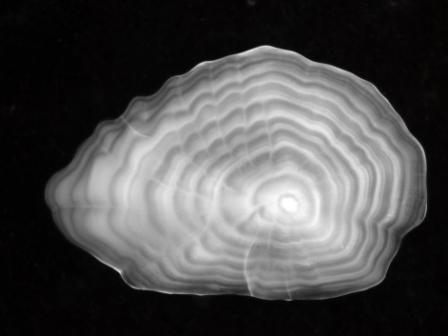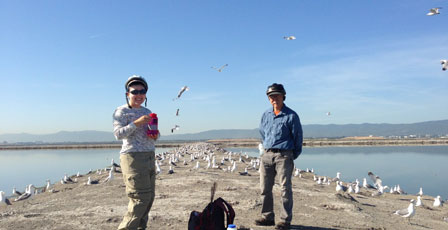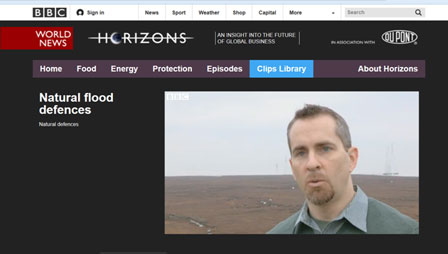 |
|
Summer 2014 Newsletter More events, including volunteer restoration opportunities, are listed on the Events and Meetings section of the project web site. Meetings Stay tuned for announcements for meetings this fall!
August 2014 Wetland Safari Saturday, August 169:30 - 11:00 a.m. Don Edwards SF Bay National Wildlife Refuge Environmental Education Center, Alviso Take a one-hour van tour around our former salt ponds. Bird life is generally more abundant the farther away from the parking lot. We will make several stops for better viewing and photography (if desired). Plus, we’ll take a look at what is left of Drawbridge. RESERVATIONS REQUIRED. Click here for reservations. Questions? Call Julie at 408-262-5513 ext.104. Beginning Bird Drawing for Families and Adults Saturday, August 1611:00 a.m. - 12:30 p.m. Don Edwards SF Bay National Wildlife Refuge Environmental Education Center, Alviso Learn how to draw birds! Increase your confidence in drawing and learn skills to help you draw what you see. We will have a variety of mounted birds available for drawing and for observing bird anatomy. We will practice techniques for making life-like bird drawings and for getting the proportions right. Appropriate for ages 8 to adult. Children, please bring an adult with you who would like to participate. Adults without children are also welcome. Bring a sketch pad and pencil, or use ours. All skill levels welcome. RESERVATIONS REQUIRED. Click here for reservations. Questions? Call Julie at 408-262-5513 ext. 104. Intermediate Bird Drawing Saturday, August 16
Drawbridge Van Excursion Saturday, August 23 An abandoned town in the San Francisco Bay? That’s right! Nestled on an island in the salt marshes of South San Francisco Bay, the town of Drawbridge once boomed. Was it a quiet, peaceful town full of nature lovers, or a rip-roaring town full of two-fisted rowdies? Find out at this program led by Ceal Craig. We’ll start with a slideshow, and then take a short van excursion to view Drawbridge across Coyote Creek. Program will be of most interest to adults interested in history or nature; children 13 and over with an adult are welcome. Space is very limited. RESERVATIONS REQUIRED. Click here for reservations. Questions? Call Julie at 408-262-5513 ext. 104. (Note: we do not visit the town itself - we go to the closest spot that one can legally view Drawbridge.) Jr. Refuge Ranger Program Saturday, August 23 Become a Jr. Refuge Ranger! Our Jr. Refuge Ranger program is an introduction to the Don Edwards SF Bay National Wildlife Refuge from its wildlife to its plants. Jr. Refuge Rangers will participate in several fun hands-on activities to earn their badge at the end of the program. Dress in layers – we’ll be going on a nature walk with volunteer Lynnea Shuck. Best suited for ages 8-11. Click here for reservations. Questions? Call Julie at 408-262-5513 ext. 104. Earth Day, Every Day at Ravenswood Pond Saturday, August 23 Wetlands provide habitat for wildlife, but they also improve human habitat. Wetlands make both our air and water cleaner, protect us from floods, and more! If you care about the health of the Bay and its natural areas, no need to wait for Earth Day to take action. Join us for a productive morning pulling weeds by the Bay. Click here to register. Tiny Drifters Sunday, August 24 
Become a Friend of the Want to receive regular updates, interesting trivia and the latest pictures and videos about the South Bay Salt Pond Restoration? Join us on Facebook. Photo Credits: Cris Benton, Judy Irving, Joe Kahrnoff, NOAA Fisheries, "Gnathophausia zoea" by Alexander Semenov via Wikimedia Commons license, SFBBOView a complete list of our partners, major donors and participants. 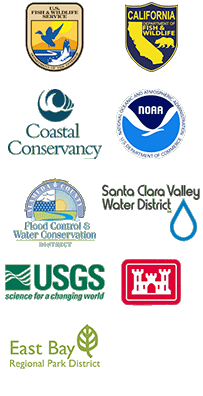
|
Contents
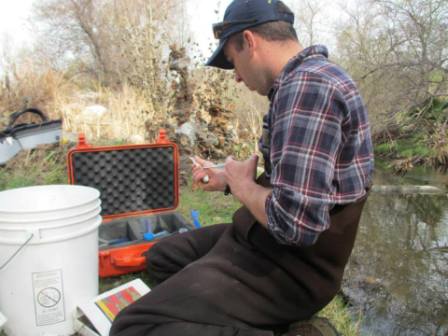 See videos of biologists catching fish and testing antennas, and more photos, at the South Bay Salt Pond Fisheries Research Program Facebook page.
See videos of biologists catching fish and testing antennas, and more photos, at the South Bay Salt Pond Fisheries Research Program Facebook page.
To make sure our Alviso ponds are not accidentally trapping threatened steelhead trout, UC Davis fisheries biologist Dr. Jim Hobbs and his crew are microchip tagging young steelhead fish along San Jose's Guadalupe River and using radio antennas to track their travels. The good news so far: our first year of steelhead-watching turned up only one fish that ended up in one of our ponds, Pond A8, and that fish was able to find its way out. The steelhead study could help in our long-term goal to restore the three-pond complex at the mouth of the Guadalupe River, part of the US Fish and Wildlife Service's Don Edwards San Francisco Bay National Wildlife Refuge, to salt marsh. Fisheries regulators at the National Marine Fisheries Service have worried that opening ponds A8, A7 and A5 to the Bay could cause steelhead to swim into the ponds and die there. Because of that concern, we have closed the gates to the three ponds each year from early December through May. 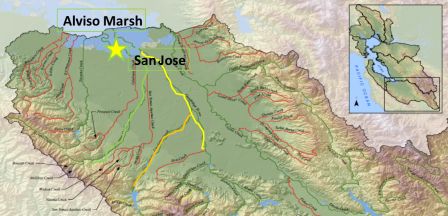 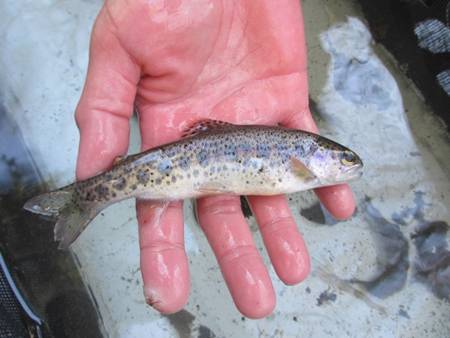
The study is gathering data on whether juvenile steelhead, called "smolts," get trapped in the ponds. If data show that they are able to swim out, Project managers hope that information will incline regulators to let us keep gates to the pond complex open year-round to let in the tides, a first step to creating a muted tidal system, and eventually fully restored salt marsh. We worked with the National Marine Fisheries Service to design and help fund the study, and the Service allowed us to open the gates to Pond A8 three months earlier this year to allow for the spring smolt observations. Hobbs' team also received help from the Santa Clara Valley Water District. We built an 8-piece gate on Pond A8 in 2010-11 as a way to carefully control how waters move in and out of the ponds. Right now, we open three of the eight sections each year. Pond A8 connects to the other two ponds. The first leg of the study took place from December 2013 to June 2014. In the study, Hobbes and his crew, including graduate student Jon Cook above, tagged 71 juvenile steelhead. They erected antennas at multiple locations, including the gates of Pond A8, to pick up on fish moving in or out of the ponds. The antennas picked up 12% of the 71 fish swimming downstream, but only one swam in to A8, and that little fish was able to find its way out. 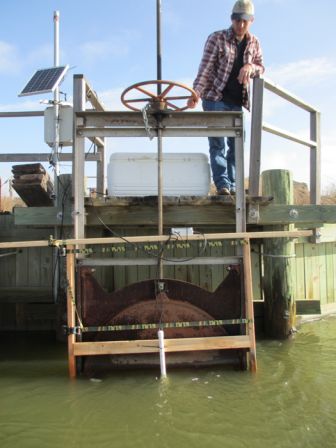
Northern California steelhead are listed as threatened by the National Marine Fisheries Service. "Threatened" means the species is vulnerable to endangerment in the near future. West Coast steelhead have experienced dramatic declines in recent decades because of a number of factors, including dams, diversion of river water for human use, and loss of river habitat to development. One of those factors is the loss of wetland habitat, which the Project is helping to reverse. We are currently seeking funding for a second year of smolt tracking during the 2014-15 steelhead outmigration season. The Project is also grappling with salmonid problems at another Alviso pond. Despite the presence of a new $3 million fish screen, Pond A16 has trapped some fall-run Chinook salmon during the second half of 2013. The fish, which are not one of the salmon runs that are listed as threatened or endangered, are entering through the pond's outflow structure during low tides, something not expected. Fish tested so far have been identified as hatchery fish. Project managers are working with the National Marine Fisheries Service to identify possible ways to solve the problem. Latest Data Shows Positive 2013 Mercury Picture in Alviso Meanwhile, we are continuing to receive positive news about Pond A8 and mercury. Pond A8 and its neighbors Pond A7 and A5 are downstream from the Bay Area's largest source of toxic mercury, the Almaden Quicksilver mine in the hills above San Jose. The mine produced mercury for use in gold mining. Its toxic legacy has drained downstream through the Guadalupe River and settled layers of mercury into nearby Bay muds. Project managers need to ensure that we conduct the restoration in a way that does not release more mercury into ecosystems and further contaminate birds, fish and other wildlife. The latest results of mercury concentrations in Forster's tern eggs show a decrease of 59% in mercury concentrations between 2011 and 2013 at the A8 pond complex. For the period of 2010 through 2013, tern egg mercury concentrations decreased by 31% at both restored ponds and reference ponds. It appears that the increase in mercury concentrations seen from 2010 to 2011 might have been caused by the late 2010 construction activity at the ponds, something that has been noted at other wetland restoration areas. Tern egg mercury concentrations in the restored ponds are currently at levels that are similar to what would have been expected without the restoration actions having occurred. The amount of mercury in the eggs remains very high, but it was very high before we began construction and changing how we managed the ponds. Paying for Restoration: Two Big Grants, but Science Funding May Be in Trouble So far in 2014, the Project has garnered a total of $1,850,000 in federal grant funds to help with our Phase 2 planning and restoration work. A $1 million grant from the US Fish and Wildlife Service National Coastal Grants Wetlands Conservation Grants Program will pay for native plantings and construction of 20 high-tide refuge islands for marsh species. An $850,000 grant from EPA will support Phase 2 planning work. However, continuing tough financial times overall for the Project have managers scrambling to find funds for key scientific studies in the upcoming year. One of the challenges is that government funders often prefer to pay for real, on-the-ground changes, the kind accomplished with bulldozers and earthmovers. It's often harder to find sources to pay for the monitoring we must do after we make those changes, to ensure that what we are doing is working and not causing harm. Managers are seeking funding to continue studies of mercury, steelhead, public access impacts on birds, and a study to see if spreading oyster shells on widespread areas will help protect snowy plover chicks from predators. We are making a renewed effort to explore private sector interest in donating. To make donating easy, we've added a donation button to our home page at http://www.southbayrestoration.org/, and have partnered with the nonprofit, the California Wildlife Foundation, to help with administering donations and to give us access to PayPal. On the Ground: Track Our Progress Eden Landing scores 2 million Drakes Bay oyster shells for plovers The highly publicized demise of the Drakes Bay Oyster Company in Point Reyes may be bad news for the company, but it is good news for snowy plover chicks at Eden Landing. Department of Fish and Wildlife managers, who operate the Eden Landing Ecological Reserve, and Ducks Unlimited, which is managing current Eden Landing construction work, have reached a deal to buy about 2 million oyster shells, or 13 truckloads worth, to scatter at Pond E14 to provide camouflage for nests of the endangered bird. Snowy plovers build their nests on unvegetated salt flats, where they are an easy target for predators. The oyster shells are not easy to come by, because most Bay Area oyster companies sell their oysters on the shell. The Project needed about millions of shells, and for months, finding enough shells looked to be a tough prospect. But Drakes Bay oyster farm and cannery recently agreed to sell theirs. The shells were delivered in mid-July. The oyster farm closed July 31st, after the U.S. Supreme Court declined to review its case against the Interior Department. Drakes Bay had challenged a federal decision not to renew the oyster farm's lease at the Drakes Estero estuary at Point Reyes National Seashore. San Francisco Bay Bird Observatory scientists found some benefit to shell camouflage using small experimental plots. This would be the first use of oyster shells on a larger area, 50 acres. Eden Landing: Workers start building kayak launch
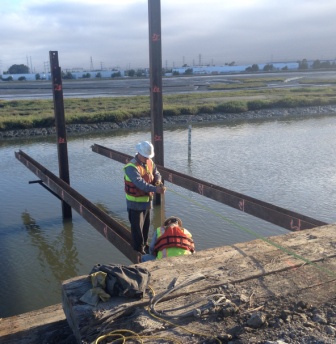 In the last piece of Phase 1 construction, workers this summer launched construction at Eden Landing of a kayak launch, a water-pumping system and an elaborate raised boardwalk system to guide visitors around the remains of the historic Oliver Saltworks. The workers with construction company R.E. Staite Engineering Inc. are excavating and driving piles to build a kayak launch and pond pumping system at ponds E12, E13 and E14 near Hayward. Workers will also scatter oyster shells and erect a system of pumps and water control structures to move water among several ponds with differing salt levels to appeal to a variety of birds. The construction, which costs about $3 million, is being funded by the state Wildlife Conservation Board. Work is expected to complete this winter, and the launch and trails will open for public use after a year of bird studies.
Conservation Achievement Award! 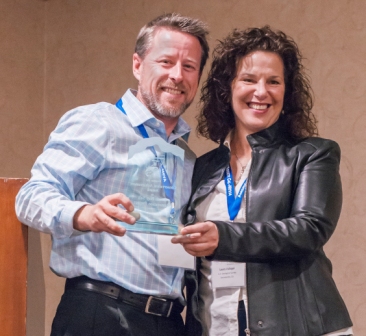 The Project has received a Conservation Achievement Award from the California-Nevada Chapter of the American Fisheries Society for outstanding contributions to fisheries conservation. Lead Scientist Laura Valoppi of USGS received the award on behalf of the Project at the chapter's 2014 annual conference from Chapter member Jim Hobbs of UC Davis, our fisheries scientist. Faces of the Restoration: Jim Hobbs Dr. Jim Hobbs of UC Davis is the fish scientist for the South Bay Salt Pond Restoration. Since July 2010, he and his research team have trawled, netted, trapped and angled in the ponds to survey fish. His research helps us understand how the restoration is affecting fish habitats and fish health. 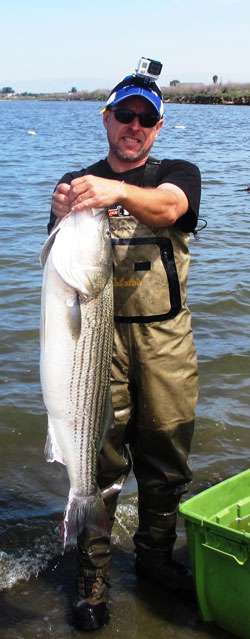 Last year, that work got major attention when local newspapers and television stations picked up on his finding that leopard shark populations are surging in the South Bay, showing up to gorge themselves on high numbers of smaller creatures populating the newly restored ponds. He has also researched shark food sources in a fascinating manner: by making the fish throw up (see video). Recently, he launched a study on steelhead trout movement through Alviso using microchip fish tags and antennas (discussed above). His research involves not only fieldwork, but also delicate chemical analysis in the lab at UC Davis, where he uses lasers to study fish ear bones (otoliths) to gather a wide range of information about fish. We caught up with Jim recently outside his campus lab to hear about the personal side of his work.
I wear two hats: I do a lot of outside field work in South Bay monitoring fish, and then I do a lot of work inside the laboratory. It takes a particular temperament for each kind of research. The otolith is really tiny and delicate. We use tools that gem cutters use, diamond-tipped blades, polishing machines, lasers and clean labs. It makes the work really tedious and time-consuming, and it takes a lot of patience. Field work takes a different kind of temperament. The work is physically demanding, strenuous and we are often working in very inclement weather; and very muddy. I can't wear my field hat in the clean lab. I'm one of the few people around who is working with the freshwater parts of the Delta, all the way down to San Jose, dealing with the entire San Francisco Bay Estuary and Delta. That was sort of what I wanted to do coming out of graduate school, to bridge the gap between the Delta, North Bay and South Bay and get an ecosystem-level understanding of the estuary. The work we are doing in the South Bay will inform restoration in the North Bay -- it's being incorporated into the monitoring plan for tidal wetland restoration in the Bay Delta Conservation Plan [the State plan to build tunnels to divert water for cities and agriculture around the Delta while managing for Delta wildlife]. I've been working on the [endangered] delta smelt since 1995. I work on a lot of species that are threatened and endangered. It's all tied to restoration -- can we monitor these populations and use this to determine if they are using the restorations, if the fish have added growth rate as an effect of the restoration use.
The otolith research is essentially a way to track the movements of fish through chemistry. The analogy is to an airplane flight data recorder. The otolith can tell you how old the fish is, how fast it's growing, where it's been all its life. Every day a layer is laid down. It's like tree rings, and with a laser, you can measure the chemistry in those layers. Different parts of the estuary have very different chemistries. The otolith's chemical makeup parallels the water the fish is living in. So when a fish migrates from freshwater to saltwater we can measure this change in the otolith, and since the otolith has layers corresponds to the age of the fish we can figure out when the fish moved from different habitats, and how well it grew in each place.
Growing up as a kid in Antioch, I spent summers playing around the Delta near Sherman Island. We would go to the sloughs to catch crawdads, and sell them to fishermen so we could buy candy and baseball cards. My first experience with fish and fishing was with my best friend’s dad. He would take us out near the mothball fleet for sturgeon and striped bass fishing all night.
It's a very difficult environment to work in, because when the tide goes out, there's no water in the ponds. And the restoration ponds are evolving into marsh, so it’s always a little different each time you go there. You have to be able to slide into these shallow habitats with a narrow time window to sample. It’s very intense. We have to live by the tides. I can almost tell you when the full moon is, because that's when we have the spring tides and most depth in the ponds. It's usually on the weekends, so I'm usually in the South Bay on the weekends. We are using every type of gear to catch every type of fish. We use a bottom trawl to catch fish in the sloughs, they can catch anything from the bottom up to 6 feet. For sloughs with water less than 6 feet high, we put on our waders and jump into the water and use a seine net. This is really muddy work. I almost always overtop my waders and get soaking wet. Then for the little creeks on the marsh plane, which are only about 12 inches wide, we use minnow traps, which are a little bit like a mouse trap -- we put cat food in the traps and catch the fish. I have three full-time technicians on my team, a part time staff scientist, and typically three to six undergrads. Also, my girlfriend comes out -- she loves it. We're down in the South Bay learning the ropes, how to do this kind of fish monitoring. What we catch in the seine net is not the same as what we catch in the trawls, and what we catch in the minnow traps is not the same as in the others. It's a real challenge. Most of the long term monitoring in the estuary is done in the deeper channels and bays on large boats. We know very little about what happens in the shallows.
We wanted to look at what the sharks are feeding on when they come to the ponds. When you open up the new habitat to the Bay, it quickly gets colonized by a lot of critters. It hasn't been foraged down -- a lot of the Bay has been foraged pretty heavily. It creates a whole new novel environment. As you open up a new pond, you get a mad rush of stuff, and the sharks take advantage of it. The sharks are pretty smart about it. They will show up when the tide starts going out. They'll just sit there and feed on the buffet that comes out of the ponds. They are eating smaller fish and benthic invertebrates, mainly polychaete bloodworms. We’ve also been tagging the sharks we collect. We recently had a shark we tagged at Eden Landing caught by a fisherman near Candlestick Point. That was really cool. Fish using restoration habitats are beginning to show up in recreational fishing.
I find longfin smelt every winter in the Alviso Marsh during spawning season. That was unknown to the research community in the Delta, the area where they expect to see longfin smelt [state-listed as threatened]. The North Bay people didn't know the smelt was down there. Longfin smelt go out to the ocean in the summer, and when temperatures cool down, they come back in. For some reason they come into San Francisco Bay, and take a right turn, and come all the way down to Alviso. In the next few years I'm going to try to see if they are successfully spawning there. The Alviso ponds produce a lot of mysid shrimp, the main prey for longfin smelt. It's one of the things that's really declined in the North Bay, where it used to be a staple of the food web. Since we've had invasive Asian clams, the food web in the North Bay is not what it used to be. The Alviso ponds produce tons of mysid shrimp. I was surveying at Pond A16, and there were so many I probably could have filled a garbage can with them -- and they are about 15 to 20 millimeters big. 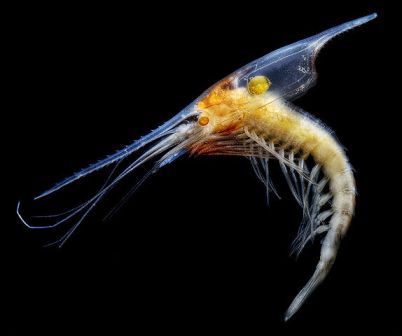 As far as baby fish food, they are the optimal thing to eat. The Alviso system is unusual. The tidal range is great, it's very dynamic, and the Asian clam has not been able to get established. The peripheral marshes like Bair Island and Eden Landing are not like Alviso. Alviso has by far the most species and is the most productive marsh in the South Bay. Thus far, it appears the restorations are producing an abundance of food for fish.
Lately my hobbies have been work, now that I have to be in the South Bay on the weekends. When I do have free time, I enjoy kayak fishing. I’m a longtime member of the Nor-Cal Kayak Anglers organization. I also enjoy swing dancing in Sacramento. But for the last four years, my hobby has been the South Bay Salt Pond Restoration Project. I'm glad my girlfriend likes it out there. For more information:
Science Updates:
California gull numbers have increased wildly in the Bay since 1980, when the birds first appeared here after their secure Mono Lake nesting island was exposed by Los Angeles water diversions. The gull population did not increase this year, however, according to the latest preliminary tally from the San Francisco Bay Bird Observatory. The Observatory estimates 53,024 adult California gulls for 2014, based on walks through nesting colonies by SFBBO scientists and volunteers, like Celia Tarcha and Byron Ryono, pictured above at Pond A9. That is about 400 birds less than the 2013 estimate of 53,466 - but still quite a lot of gulls! The levees along ponds A9, 10, 11 and 14 continue to be gulls' favorite nesting spot, after we flooded their previous favorite colony site, Pond A6, in 2010. California gulls, while they are native birds and protected by the Migratory Bird Treaty, can live off garbage and are major predators of other native birds' eggs and chicks, including those of the threatened Western snowy plover, a species the Project seeks to support, and other waterbirds. Salt Pond Restoration in the News A compendium of recent media coverage
|
| Subscribe to the newsletter. | |
